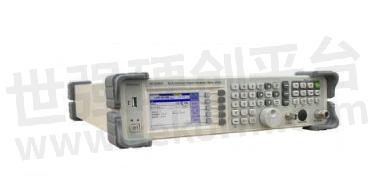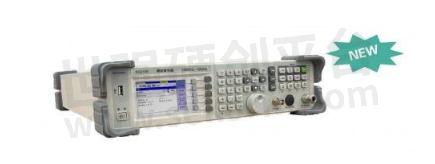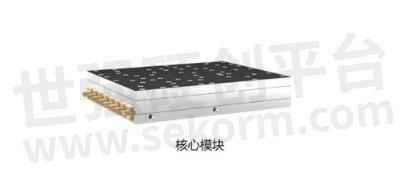The Principle and Use of the Signal Generator

What Is a signal generator?
The signal generator is a device that can provide various frequencies, waveforms, and output level electrical signals. When measuring the amplitude, frequency characteristics, transmission characteristics, and other electrical parameters of various telecommunications systems or telecommunications equipment, and when measuring the characteristics and parameters of the component device, the signal source or incentive source of the test is used.
A signal generator, also known as a signal source or oscillator, has a wide range of applications in the field of production practice and technology. Various waveform curves are represented by triangular function equations. It can produce a variety of waveforms, such as triangular waves, sawtooth waves, rectangular waves (including square waves), and sine wave circuits are called function signal generators.
Principle of Signal Generator
The signal generator is used to generate a sine signal (low frequency) with a frequency of 20Hz to 200kHz. In addition to the voltage output, some have power output. Therefore, it is very widely used. It can be used to test or maintain the frequency characteristics, gain, and frequency bands of low-frequency amplifiers in various electronic instruments and electronic equipment. It can also be used as an external regulating signal source for high-frequency signal generators. In addition, when calibrating the electronic voltage gauge, it can provide an AC signal voltage. The principle of low-frequency signal generator: The system includes the main vibration level, the main vibration output regulator, the voltage amplifier, the output attenuator, the power amplifier, the impedance converter (output transformer), and the indicator voltage table.
Multi-made Signal Generator

The SG2000 series multi-standard signal generator can meet the diverse product selection of different functional needs and different applications. It has various buildings to modify the function (AMFMM adventure) in its functions. /FSK) and customized special modulation signals (SSB/DSB/CW modulation, etc.): In addition, functions such as frequency scanning, frequency scanning, linear frequency adjustment, low frequency output, and upper frequency conversion have been integrated. The generator has become a flexible and general instrument, which is suitable for teaching and scientific research, product development, production, and maintenance. Rich logic hardware interface and widescreen liquid display, allow you to perform various control operations. The complete standard SCPI command set and universal USB and LAN interfaces have brought great convenience to remote control and secondary development.
SG2150 Microwave Signal Generator

The SG2150 microwave signal generator is positioned as a multi-functional, cost-effective signal generator. The frequency range covers 100kHz to 15GHz. It has a variety of commonly used simulation modulation functions (AM/FM/M), pulse modulation functions, low frequency frequency frequency output functions, and frequency scanning functions. The above function makes this signal generator a flexible and general instrument, which is suitable for teaching and scientific research, product development, production and maintenance, and meets the application needs of different application scenarios. Rich logic hardware interface and wide-screen LCD display, allow you to perform various control operations. Standard 2 height chassis, complete standard SCP command sets, and universal multi-communication modes have brought great convenience to remote control and secondary development.
MSG700 Series Modular Signal Generator

The MSG700 series modular signal generator has excellent performance and a volume of Small 5. It has a variety of working modes such as CW signal, simulation modulation, pulse modulation, and digital modulation. Teaching and scientific research, product development, and system integration. The A-type module focuses on the simulation signal modulation. Its maximum simulation modulation rate is as high as 1MHz: Type B module focuses on vector signal modulation. The built-in regulator can flexibly support various communication data chains, standard public network communication systems wired digital TV broadcasts, etc. Input of baseband data, the maximum baseband modulation bandwidth is up to 20MHz, which is convenient for users to build the experimental platform. The complete standard SCPI command set and universal USB and LAN interfaces have brought great convenience to remote control and secondary development.
- +1 Like
- Add to Favorites
Recommend
- Baluelec Releases MSG200A Microwave Signal Source Module with the Frequency Range of 9kHz ~ 20GHz
- Baluelec Releases HRA4080 RF Comprehensive Tester Supporting Multi Touch Operation for Various Parameter Testing Needs
- How to Calculate the Frequency of the Signal Generator?
- How to Use the Spectrum Analyzer?
- Handheld Spectrum Analyzer Function
- The ST4000 Series Integrated Tester Can Be Selected from 9kHz ~ 1.8GHz to 9kHz ~ 6GHz
- What Is the Difference Between Vector Signal Source and Radio Frequency Signal Source?
- EMI Measurement of the Working Principle and Product Advantage of the Receiving Machine
This document is provided by Sekorm Platform for VIP exclusive service. The copyright is owned by Sekorm. Without authorization, any medias, websites or individual are not allowed to reprint. When authorizing the reprint, the link of www.sekorm.com must be indicated.





























































































































































































































































































































































































































































































































































































































































































































































































































































































